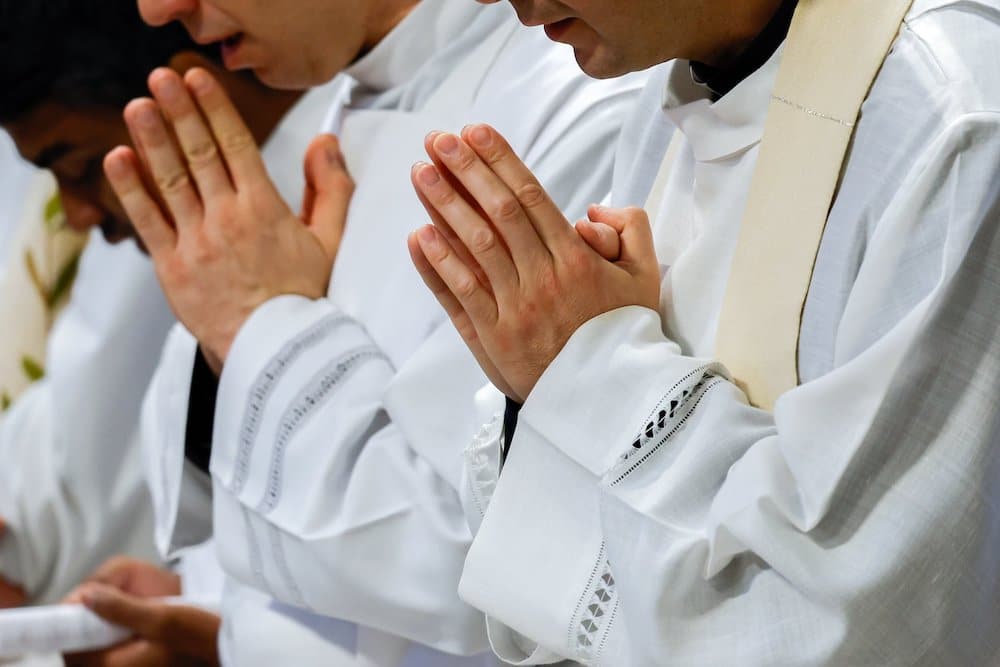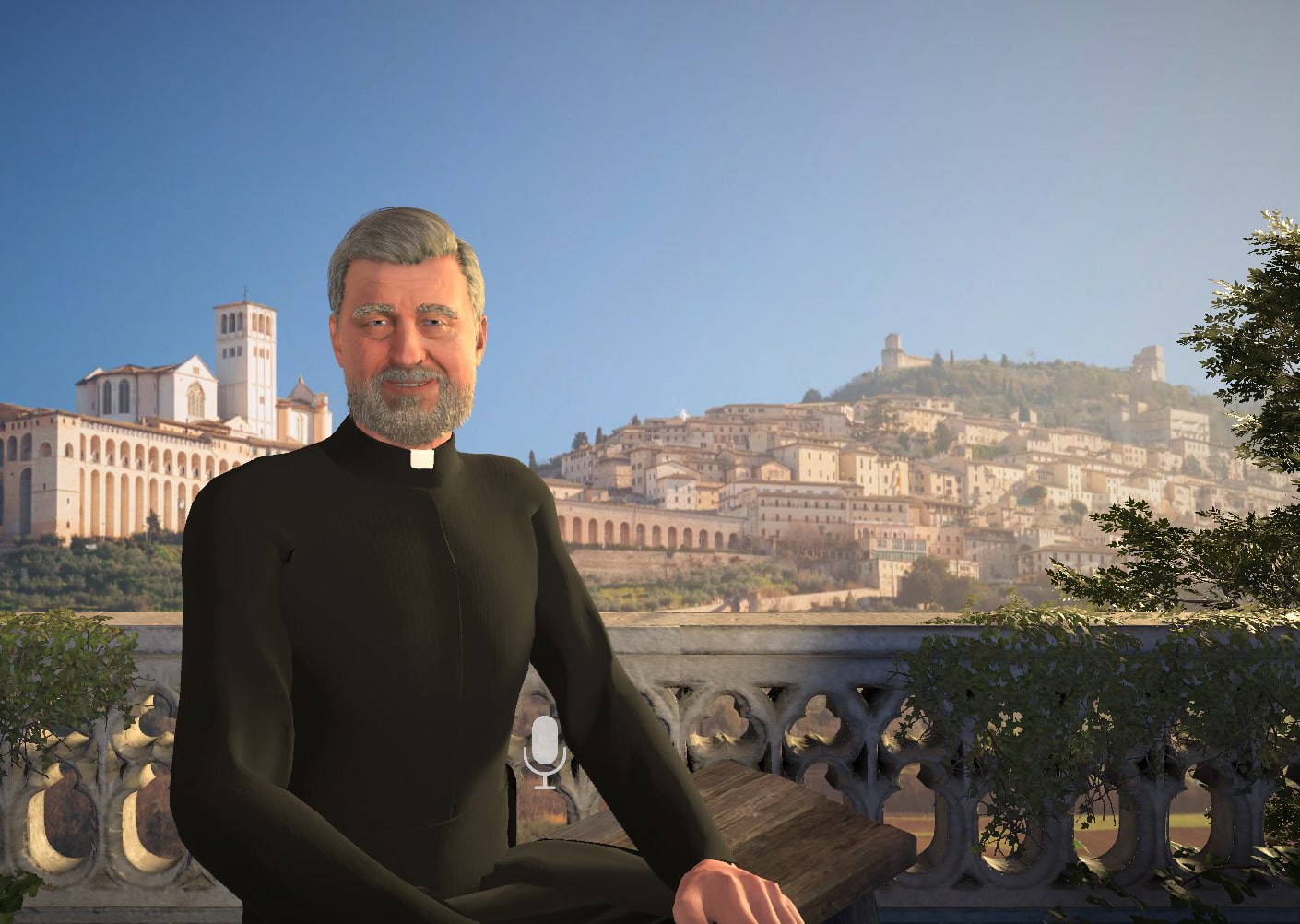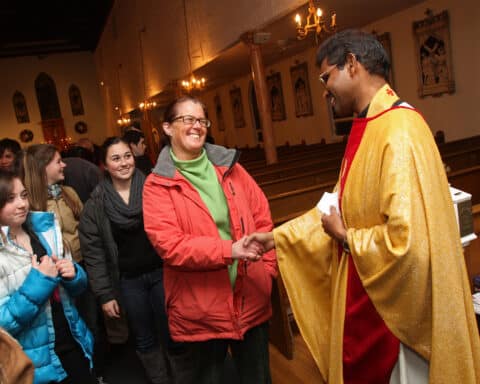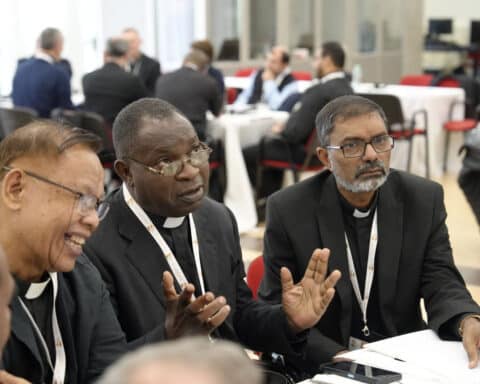Catholic Answers’ newly-launched Father Justin chatbot was an absolute disaster. For those unfamiliar with the controversy, the esteemed apologetics apostolate, which has labored for decades to win souls, launched an AI avatar dressed in a Roman collar named “Father Justin” to answer questions from users about the faith. The outcry online was so fierce that the organization swiftly “laicized” the cartoon. The updated avatar, Justin, is no longer portrayed as a priest.
While other aspects of this controversy can and will be debated elsewhere, my chief objection is that Catholic Answers chose to personify its large language model as a priest. The decision was a terrible mistake, rightly roundly mocked. The Father Justin avatar was a grievous offense to the priesthood, apart from the questions about how the Church engages with AI.

Serving in persona Christi
The priesthood itself is a sacred institution, existing because of the Incarnation. Jesus, in his divine wisdom, took human flesh. During his earthly life, he established the priesthood, calling to himself men and entrusting to them the totality of priestly powers. This is a divine gift, one that no man can truly be worthy of.
We don’t need our priests to know everything. A priest is not ordained because he excels in seminary. Part of the mystery of the priesthood is that God calls and uses broken and imperfect men to redound to his glory. Sacred orders are not conferred because they’re earned by human ability or personal excellence. The essential nature of the priesthood is that a man, ordained by the Church, serves the Church in persona Christi.
“[Future priests] need to be educated to love the truth, to be loyal, to respect every person, to have a sense of justice, to be true to their word, to be genuinely compassionate, to be men of integrity and, especially, to be balanced in judgment and behavior.”
Pope St. John Paul II
The good people at Catholic Answers, whom I deeply admire, know this. But here’s the rub: they launched Father Justin anyway. And they did so, in part, because they wanted their computer program to have authority. They seized the image of authority that belongs only to holy orders and bestowed it on their robot.
Even the best-programmed, most engaging robot is still a robot. Consider that forming men fully in their humanity has been the most important conversation around preparation for the priesthood for the past 30 years. The Church has been laboring to prevent automatons from receiving holy orders!
A bearer of hearts
Seminaries intentionally cultivate the human qualities of seminarians because it’s precisely the full and authentic flourishing of their humanity that will make them effective ministers of Jesus Christ. “They need to be educated to love the truth, to be loyal, to respect every person, to have a sense of justice, to be true to their word, to be genuinely compassionate, to be men of integrity and, especially, to be balanced in judgment and behavior,” says Pope St. John Paul II.
The introduction of AI as a substitute for priests in teaching and guiding the faithful also risks diluting the profound mystery of faith into mere information processing. The motto of my religious order, the Dominicans, is Veritas (“Truth”). No one has to convince me of the importance of getting your theology straight, of accurate information about Catholic teaching. But for the priesthood, that’s simply not enough. Faith is not just knowledge; it is a lived relationship with God. Jesus came to heal hearts and minds, not minds alone.
The priest is the bearer of hearts, drawing them into communion with Christ after the manner of the Sacred Heart. To the extent that he is generous, prudent, quick to forgive and to console, a priest can free souls trapped in the prison of loneliness and lead them into a relationship with the living God.
There are enough robots and programs. What souls need today is accompaniment. They need friendship. In a word, they need a priest.





